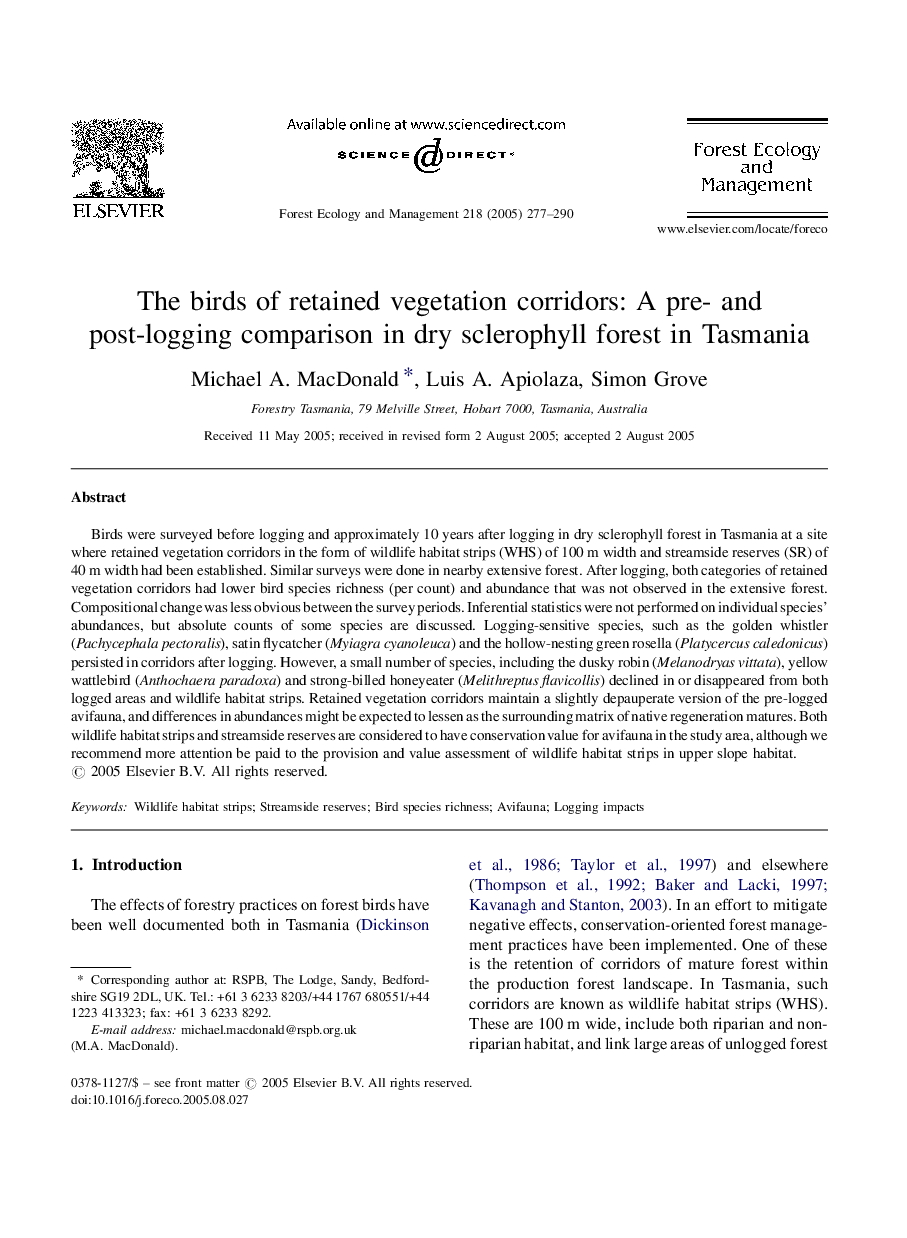| Article ID | Journal | Published Year | Pages | File Type |
|---|---|---|---|---|
| 9620135 | Forest Ecology and Management | 2005 | 14 Pages |
Abstract
Birds were surveyed before logging and approximately 10 years after logging in dry sclerophyll forest in Tasmania at a site where retained vegetation corridors in the form of wildlife habitat strips (WHS) of 100Â m width and streamside reserves (SR) of 40Â m width had been established. Similar surveys were done in nearby extensive forest. After logging, both categories of retained vegetation corridors had lower bird species richness (per count) and abundance that was not observed in the extensive forest. Compositional change was less obvious between the survey periods. Inferential statistics were not performed on individual species' abundances, but absolute counts of some species are discussed. Logging-sensitive species, such as the golden whistler (Pachycephala pectoralis), satin flycatcher (Myiagra cyanoleuca) and the hollow-nesting green rosella (Platycercus caledonicus) persisted in corridors after logging. However, a small number of species, including the dusky robin (Melanodryas vittata), yellow wattlebird (Anthochaera paradoxa) and strong-billed honeyeater (Melithreptus flavicollis) declined in or disappeared from both logged areas and wildlife habitat strips. Retained vegetation corridors maintain a slightly depauperate version of the pre-logged avifauna, and differences in abundances might be expected to lessen as the surrounding matrix of native regeneration matures. Both wildlife habitat strips and streamside reserves are considered to have conservation value for avifauna in the study area, although we recommend more attention be paid to the provision and value assessment of wildlife habitat strips in upper slope habitat.
Related Topics
Life Sciences
Agricultural and Biological Sciences
Ecology, Evolution, Behavior and Systematics
Authors
Michael A. MacDonald, Luis A. Apiolaza, Simon Grove,
